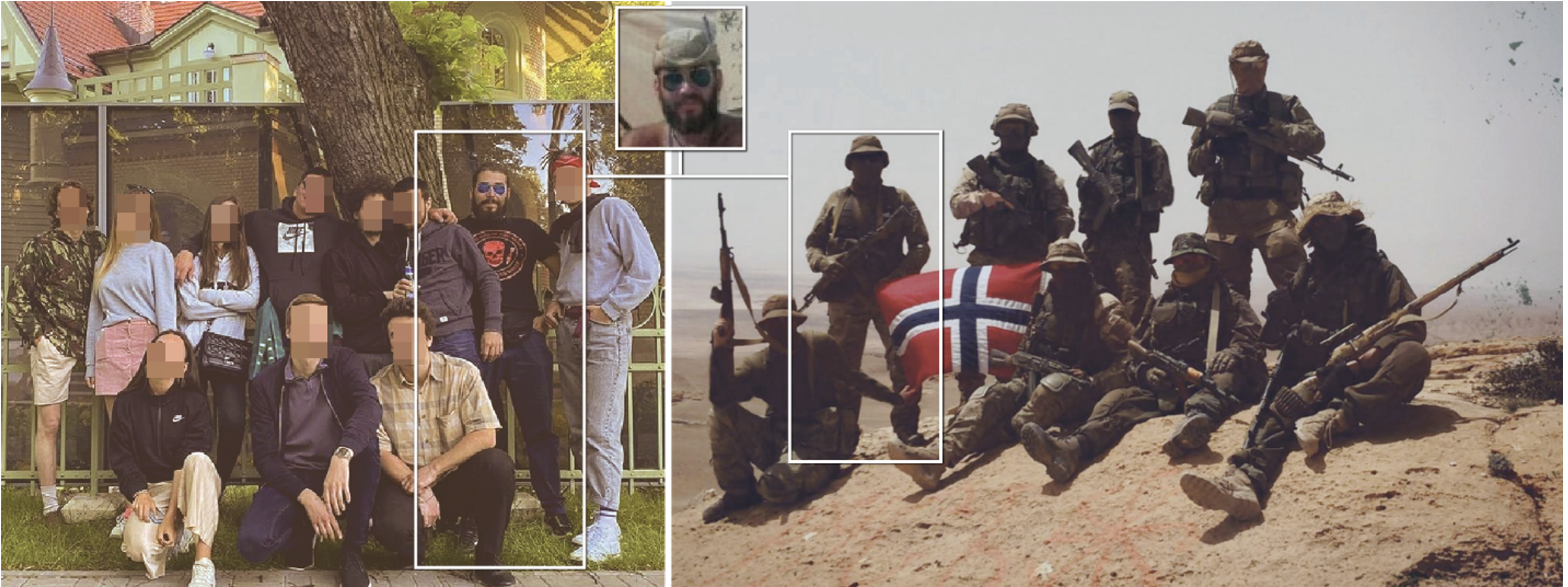
BANNER: (Source: Instagram, left; Skandinavisk Frihet/archive, right)
A mercenary connected to Russian neo-Nazi militant group known as Rusich has died in Russia, the DFRLab can confirm.
Rusich, infamous for its role in the early years of the war in eastern Ukraine, is a Saint Petersburg-based militant group with significant far-right ties. Open-source evidence places members of the group in Syria for what is believed to be two separate trips during Russia’s and the Assad regime’s push to secure the Homs Province.
On August 9, 2021, popular Instagram account _r.f.m_ posted an obituary for a fighter identified as Alexander “Wax” (Александр “Воск,” transliterated as “Vosk”) Voskanyan. The letters in the account’s name, RFM, are an abbreviation of its previous name “religion for men,” a reference to its posts that are exclusively about mercenary life and women. The account is public and thus easy for all to access, but it also frequently deletes its posts en masse.
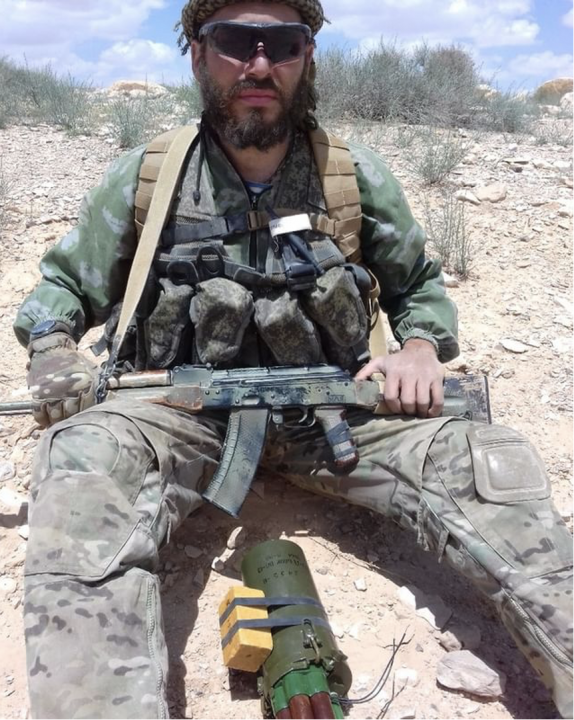
On the same day, the “Reverse Side of the Medal” (RSOTM) Telegram channel posted further detail about Voskanyan and the nature of his death. Translated into English, it reads in part:
He was an experienced fighter for his young years with two foreign deployments behind him, and therefore, knowing his unquenchable love for military affairs and service to the Motherland, I can say that unfortunately, he died at home, in Russia, during an accident while honing his skills, preparing for his next combat campaign.”
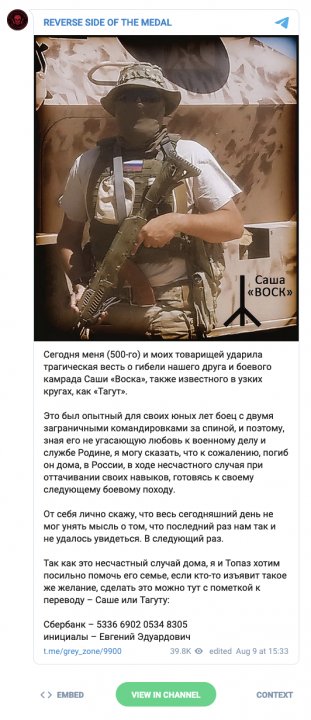
An account number for donations to Vosk’s family, to be made out to Evgeniy Eduardovich Rasskazov, appeared at the end of the post; Rasskazov is more commonly known by his nom de guerre, “Topaz.” Topaz is a well-known fighter affiliated with Rusich and has been documented as fighting against Ukrainian government forces in the Donbas. It is no coincidence that Topaz would handle donations for Voskanyan given his involvement in Rusich, as identified during the course of this investigation.
The following day, Instagram account _r.f.m_ published a nearly identical post to that of RSOTM’s Telegram post, but this one included two additional pictures that tied Voskanyan to Rusich. The post was public for a few days before it was deleted.

Only one of the three photos in the Instagram post was new, as the other two had already circulated on Instagram channels connected to Rusich or the Wagner Group over the past few years. An investigation by Norwegian public broadcaster NRK revealed that one of the most frequent people appearing in photos of Rusich members in Syria was in fact Yan Petrovsky, a St. Petersburg neo-Nazi and long-time member of Rusich.
In two other previously circulating photos, Voskanyan could be seen with Petrovsky; each photo seemed to have been taken from different tours to Syria. In one of these photos, Petrovsky and Voskanyan attempted to pass themselves off as Nordic volunteer fighters, a practice among other Rusich members previously documented by NRK. They did this in part by posing for photos with a Norwegian flag, and claiming in an interview to be comprised of fighters from Norway, Sweden, and Iceland.
Many of Rusich’s Instagram posts are in Icelandic, which along with Faroese is among the Scandinavian languages most closely related to Old Norse. These references to Nordic countries are likely part of an attempt to live out a modern Viking fantasy, a practice not uncommon with Rusich members and other neo-Nazi groups. There is no evidence to suggest that anyone from a Nordic country fought with Rusich in Syria.
Voskanyan was easily identifiable in images from Rusich deployments to Syria as he appeared to be the only left-handed fighter with the group. This factor combined with his proclivity for using a knee pad insert over his left knee made for strong indicators to look for when searching for his images online.
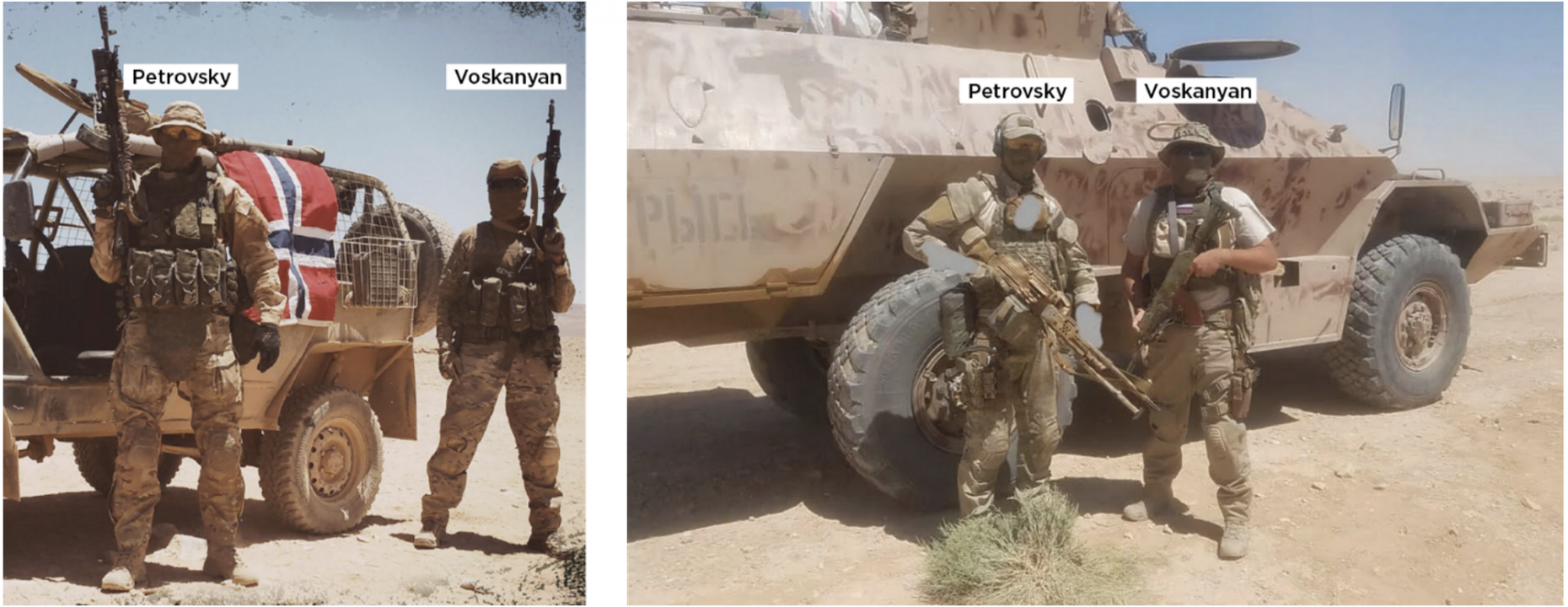
Identifying “Vosk” Voskanyan
The DFRLab verified Voskanyan’s identity through a number of unique features. First, a search of Rusich-connected accounts for persons named “Alexander” revealed a likely result: Alexander “Vosk ”Voskanyan.
One particular Instagram account, monteavo88, stood out, as it bore the user name “Alexander Voskanyan” and was connected to one Rusich-linked account. The name of the account suggests that the person behind the account would have the same far-right leanings as other Rusich members, since the number 88 is often used by neo-Nazis as a shorthand for “Heil Hitler,” with H being the eighth letter of the Roman alphabet. But it is also highly likely a reference to the late Armenian nationalist leader Monte “Avo” Melkonian and the 1988 Armenian independence movement. (Voskanyan is an Armenian name.)
One of the account’s earliest posts was a drawing of a person in military clothing with the Rusich logo, suggesting a possible connection between the account and the group.
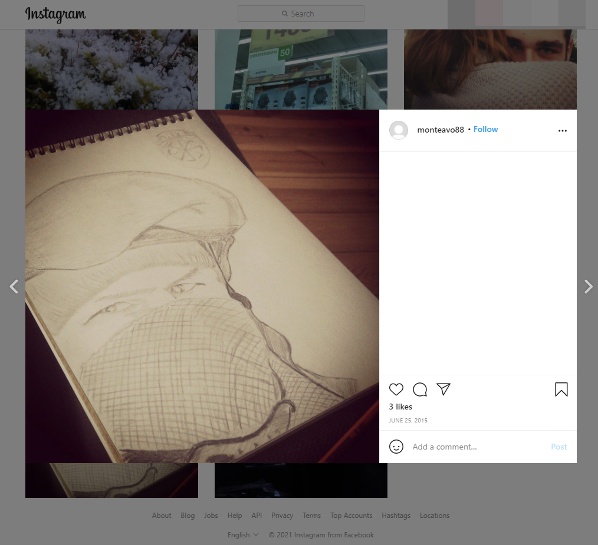
The account owner was careful and never posted a full photo of their face, but looking through the profile of a close acquaintance revealed a match. In a group photo, one person bore a striking resemblance to the man in the obituary photos. Particularly damning was the fact that he wore merchandise from the popular Russian mercenary-themed account RSOTM. A comment on the photo stated “Sasha [diminutive form of “Alexander”] is the most beautiful.”
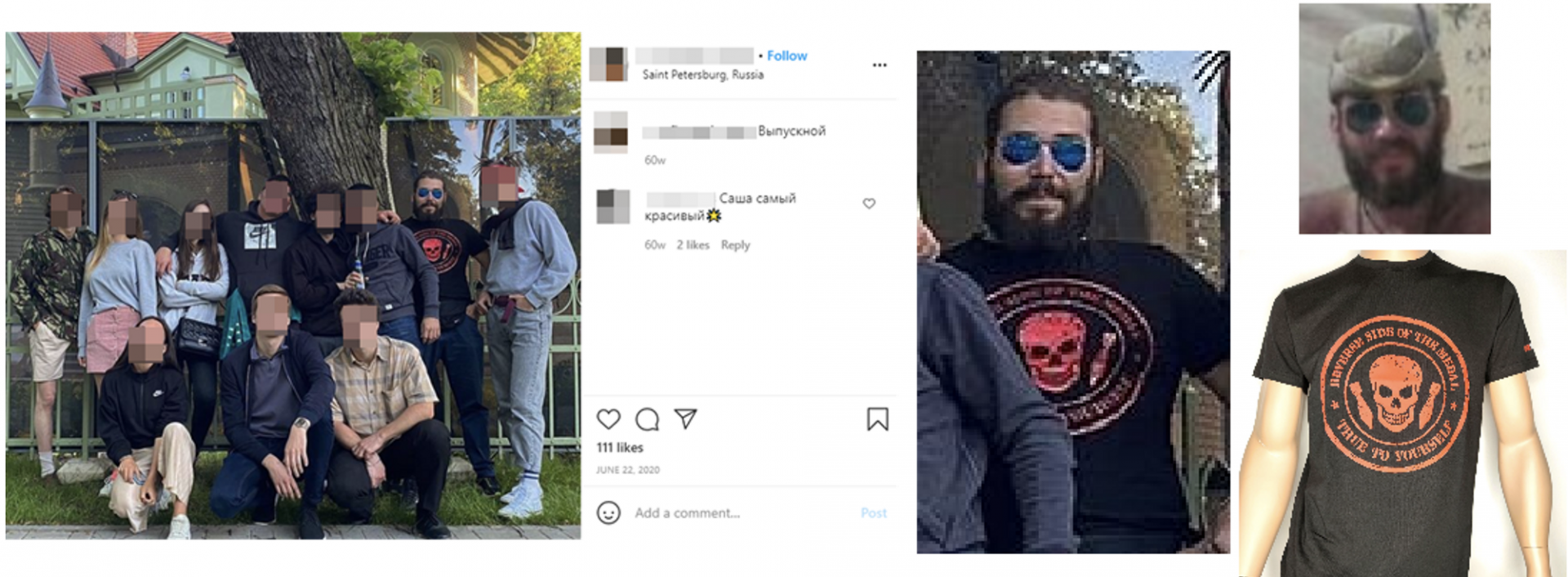
Finally, to confirm that Voskanyan had indeed died recently and was not just another Rusich-connected mercenary who happened to look like Voskanyan, the DFRLab found an obituary for Voskanyan issued by a community page for St. Vladimir’s Cathedral in Kronstadt on VKontakte. The obituary announced that Voskanyan had died tragically and that his funeral service had taken place at 1:00 p.m. on August 13, 2021. Voskanyan had previously posted images of a different church in Kronstadt, suggesting he lived in that part of St. Petersburg.

Rusich and its activity in Syria
Prior to its activity in Syria, Rusich was an infamous group in the war in the Donbas region of eastern Ukraine. In September 2014, Rusich ambushed a convoy of Ukrainian volunteer fighters from the “Aidar” battalion, killing approximately 40 men. Among the footage released from the ambush was imagery of the leader of the group, Alexey Milchakov, holding the mutilated ear of one of the deceased soldiers. Around this time, news resurfaced of a 2011 incident in which Milchakov killed a puppy and put the footage on his social media profile for all to see.
After the murder of their former commander Alexander Bednov on January 1, 2015, Rusich briefly transferred to 1st Battalion “Viking” of the so-called Donetsk People’s Republic before Milchakov returned to Russia that July and withdrew Rusich from the conflict. In 2016, a top figure in the group was arrested in Norway and expelled from the country.
In spring 2016, Rusich participated in a youth camp held by ENOT Corp, another paramilitary far-right organization based out of Russia. The camp included young children from Belarus who received military training from members of the group. Members of ENOT were later detained by the Russian federal security service (FSB) in 2018 for incitement of hate and involvement of a minor in commissioning of a crime.
Denis Korotkov, writing for St. Petersburg publication Fontanka, alleged that Milchakov held a position with Wagner — as well as Rusich — with the “M-number” М-2691. “M-numbers” are how researchers commonly refer to the personal identification numbers assigned to Wagner fighters. Korotkov asserted that Milchakov was a sapper/rifleman in Wagner’s 3rd assault detachment. According to the Ukrainian website Myrotvorets, Voskanyan’s Wagner M-number lied in the range of M-3080 to M-3087. Alexey Bolgazin, who is alleged to also have a connection to Rusich, held an M-number in an overlapping range of М-3078 to М-3085.
Fontanka also cited rumors alleging that Wagner included a group of six people from Rusich in 2017. This is backed up by public reporting in the form of multiple undated images of persons connected to Rusich in Syria, utilizing Russian BPM-97 Vystrel lightly-armored vehicles and other wheeled vehicles. The BPM-97 was originally designed for Russian border guards and is used in a limited capacity by the Russian armed forces and other federal entities, but it has also been spotted being used by Wagner forces on multiple occasions. Footage from the battle of Debaltseve in February 2015, for example, showed Vystrels along with other Russian military materiel crossing from Russia into Ukraine where the battle would take place.
In a video posted by Instagram account rusichvpk, believed to belong to a key Rusich figure, fighters from the group were shown carrying out an assignment in Syria. Using geolocation, the DFRLab verified Rusich’s footprint in Syria as spanning from Palmyra to at least Al Kawm. One shot was geolocated to a mountain range north of Palmyra, where most of Rusich’s time appeared to be spent. The date of this footage is unknown but is believed to be during a separate trip from that which took the unit to the northern part of Homs province. Unverified information suggested that the first trip may have taken place as early as 2016, which would correspond with an offensive to re-take Palmyra from ISIS.
In one particular photo geolocated north of Palmyra, a BMP-1 is visible against the backdrop of desert mountains. An AGS-17 automatic grenade launcher had been mounted to the main gun of the BMP with an improvised trigger system, allowing it to be fired remotely. The photo was matched through a mountain in the background that is visible on Google Earth.

Geolocation of a BMP-1 shown in a video posted to Rusich-connected Instagram account rusichpvk; the video appeared to have been filmed near Palmyra, as evident from the mountain in the background. (Source: rusichvpk on Instagram, left; Google Earth, right)
Assault groups were assembled, one of which was walking along the ridge, led by the commander of the detachment, who personally took part in the assault. The second, with the support of the BMP-1 with an AGS-17M mounted on the turret (it could shoot with a cable tied to the trigger and going through the turret hatch), under the leadership of the squad’s technical deputy commander, and which included a strike squad, entered from the left flank.
The image accompanying the post included a piece of string with a brass arrowhead pendant, which had allegedly been gifted to the fighter who perished during the fighting. A Norwegian 1kr. coin and a Soviet dogtag were also attached to the string. The coin potentially originated from Yan Petrovich, who had spent considerable time in Norway.
Another shot showed the northernmost point that could be geolocated in the video: Jabal Muqaybirah, a mountain located just south of the town of Al Kawm in the northern Homs province.

Geolocation of frame from video showing Rusich activities in Syria. (Source: rusichvpk on Instagram, left; DFRLab via Google Earth and Bing Maps, right)
Likely this footage was captured in the summer of 2017, when the Syrian Arab Army and Russian forces fought to encircle ISIS south of the Euphrates and retake oil fields in the area. This location would have been one of the final areas to capture in order to fully close the pocket around ISIS in the northern Homs province. Footage of this location exists on several other social media accounts linked to either Rusich or Wagner more generally.
As the identities of more members of the crew of Rusich fighters which went to Syria to fight become known, it becomes increasingly clear that they were not Nordic volunteers as suggested in the 2018 interview. Rather, they were Russian guns for hire, and a small part of a large mercenary force sent to expel ISIS from areas of Syria rich in carbon fuel sources.
Cite this case study:
Michael Sheldon, “An untimely death reveals the nature of a Russian neo-Nazi unit that fought in Syria,” Digital Forensic Research Lab (DFRLab), October 7, 2021, https://medium.com/dfrlab/an-untimely-death-reveals-the-nature-of-a-russian-neo-nazi-unit-that-fought-in-syria-5398a7d28e0a.

